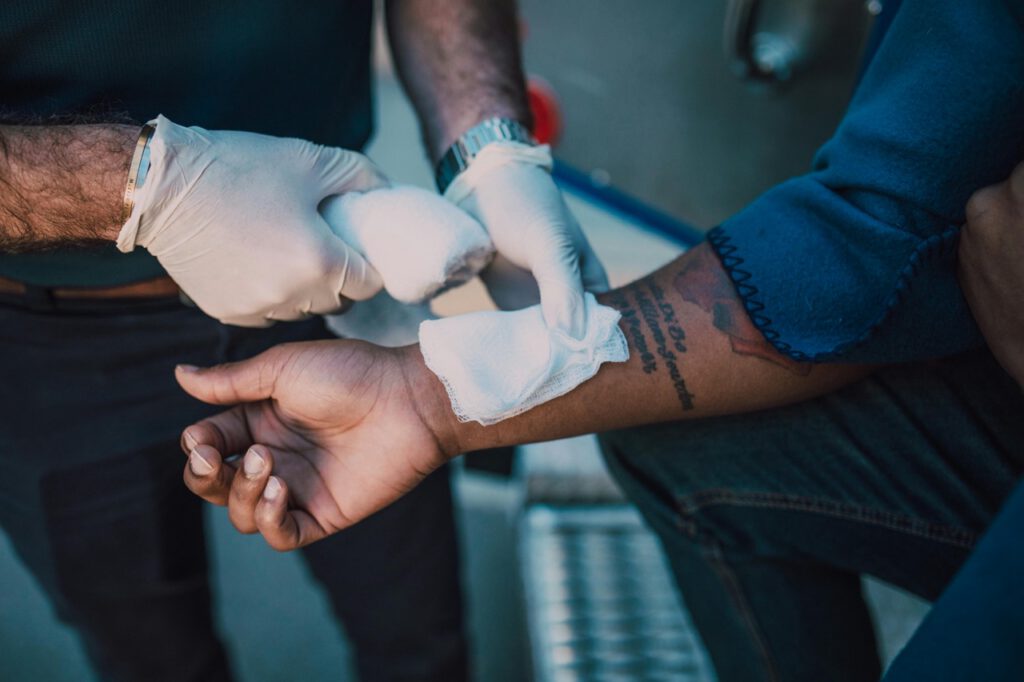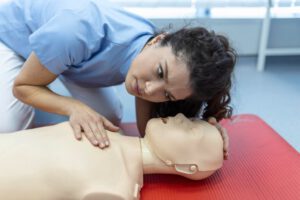In emergency situations, the actions taken in the first few minutes can have life-saving consequences. That’s where first responders step in—highly trained individuals equipped to deliver prehospital care, stabilise patients, and bridge the gap until advanced medical help arrives. But beyond technical skills, being an effective first responder requires a strong understanding of your responsibilities, the ability to adapt under pressure, and the awareness to navigate complex, unpredictable environments.
In this post, we’ll explore the core responsibilities, challenges, and techniques involved in first response emergency care, including triage, scene assessment, and life-saving interventions.
Understanding the Role and Responsibilities of a First Responder
A first responder operates in clinically governed, prehospital and out-of-hospital environments, providing urgent care across a wide range of settings—from roadside collisions to industrial incidents and public events.
Their responsibilities include:
- Assessing, treating and managing patient conditions within their scope of training.
- Administering emergency medications and using equipment such as airway adjuncts, defibrillators, and trauma dressings.
- Operating under clear policies, procedures and clinical governance frameworks.
- Making safe handovers to clinicians, including cases involving refusal of care or escalation to other services.
- Working collaboratively with other responders, support staff, and clinicians to ensure patient care is effective and coordinated.
First responders must act with confidence and integrity, knowing exactly where their responsibilities begin—and end. The goal is to deliver safe, effective and timely care, always advocating for the patient’s best interest.
What Affects First Responder Performance?
First response care takes place in high-stress environments, and numerous factors can influence performance:
Human Factors
Cognitive overload, fatigue, fear, and stress can all impact decision-making and reaction times. Maintaining mental readiness, using checklists, and engaging in scenario training helps build resilience.
Environmental Factors
Noise, poor lighting, adverse weather, and confined spaces often make emergencies more difficult to manage. First responders must remain adaptable and risk-aware.
Organisational Factors
Policies, training gaps, or unclear protocols can hinder response efficiency. Operating within a structured framework, with regular refresher training, improves team cohesion and safety.
Job-Specific Demands
Shift work, long hours, and physically demanding roles can lead to burnout or injuries. Recognising signs early and prioritising wellbeing is essential for long-term capability.
Individual Characteristics
Age, experience level, confidence, and emotional regulation all influence how a responder might act in a crisis. Peer support, ongoing education, and confidence-building drills are key to overcoming these factors.
Strategies to mitigate these challenges include:
- Kit organisation and layout for quick access
- Use of check cards or prompt sheets
- Regular scenario-based training and debriefing sessions
- Peer mentoring and psychological support systems
Primary Triage and the Ten Second Triage Tool (TST)
In major incidents, prioritising care is essential. First responders must be able to quickly assess and categorise casualties using a recognised triage tool.
The Ten Second Triage (TST) tool is designed for speed and simplicity:
- Is the patient breathing?
- Can they obey commands?
- Are they moving?
Based on the answers, responders assign colour codes that indicate treatment urgency. In more complex or NHS-integrated responses, the Major Incident Triage Tool (MITT) may also be used.
Triage is not a one-off event—patients must be reassessed as their condition or the situation evolves.

Life-Saving Emergency Interventions in Prehospital Settings
First responders are trained in a wide range of interventions, including:
- Direct pressure and trauma dressings for bleeding control
- Blast dressings and haemostatic packing for catastrophic haemorrhage
- Improvised and manufactured tourniquets
- Chest seals (occlusive and non-occlusive) for penetrating chest trauma
- Airway adjuncts such as oropharyngeal (OPA) and nasopharyngeal (NPA) devices
- Recovery position for unconscious but breathing patients

Dynamic Scene Risk Assessment: Keeping Everyone Safe
Before providing care, a dynamic scene risk assessment helps ensure the safety of the responder, patient, and bystanders.
Steps include:
- Identify hazards (e.g. fire, traffic, violence, electrical risks)
- Determine who might be harmed and how
- Evaluate the risks and apply necessary precautions
- Communicate your findings to others on scene
- Remain alert to new or changing hazards and adapt the plan accordingly
Scene safety is a constantly evolving process. Verbalising decisions helps maintain clarity under pressure and supports effective teamwork.
Why First Response Emergency Care Training Matters
Whether you’re a security professional, volunteer responder, or aiming for a healthcare career, having the skills to act confidently in emergencies is invaluable. Real-world first response is about more than applying a bandage—it’s about fast decision-making, collaboration, communication, and safe practice.
My Go To provides accredited First Aid and First Response Emergency Care training designed to give you the confidence and practical tools to handle emergencies—whatever your role or environment.
Explore our range of RQF and SQF first aid training courses to take your skills to the next level. Start your journey with My Go To and make a real difference when it matters most.



